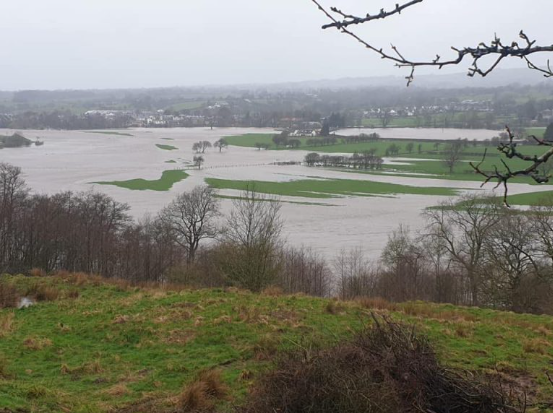This blog been written by a member of the Newground Flood Team.
Flooding, extreme weather, power cuts, moorland fires… These are some of the emergencies that the UK faces frequently. However, 2020 saw another rare emergency affect the UK AND the rest of the world – Coronavirus (COVID-19) and it highlighted how important community resilience is for everyone.
Community resilience involves planning ahead for a range of emergencies that an area could face. The more resilient a community is, the more prepared and efficient it can be to respond and minimise the impacts, should an emergency situation arise. Staying informed and having a plan are two key aspects of community emergency resilience. You can stay informed by keeping up to date with your local news, weather and radio, and you can create an up-to-date emergency plan document that can be referred back to during the emergency. This ensures that all the information and resources are together in one location so that the necessary actions and assistance can be provided in the community when required. The plan can highlight:
It’s important to plan ahead for a range of emergencies, especially if you live in more rural and remote locations. By creating a community resilience plan, there is a good chance that it will cover a number of different emergencies. Outlined below are just some examples of how you could prepare as a community to increase your resilience:
In February and March 2020, the UK saw the arrival of Storms Ciara, Dennis and Jorge which brought heavy rainfall that caused flooding to over 3500 properties across the country. There was disruption to power supplies, travel and businesses. Flooding events like this highlight the importance of community resilience and planning ahead to ensure everyone remains as safe as possible. As we have entered the new storm season and with winter approaching, communities should prepare for the possibility of more flooding and power cuts and ensure that residents and businesses have a flood plan in place and ensure vulnerable residents are signed up to the priority service register with their electricity supplier.

Image: The Flood Hub
As the clock approached 12am on New Year’s Eve, nobody would have predicted how 2020 turned out. Coronavirus has completely changed our lives and we have all had to adapt. It has highlighted the importance of community resilience and helping those who are vulnerable or elderly and as a nation, we have all pulled together to help. For example, shopping for the elderly at risk, telephone ‘buddy’ network for strangers to speak with the lonely and isolated, and super markets prioritising delivery slots for the elderly etc. With winter approaching, cold and respiratory illnesses become more common.
As we enter autumn and winter, it is important to prepare for other possible events and weather conditions. Make sure you are winter ready by following some simple steps.
Autumn leaves may clog up drains and increase local flood risk or become slippery and be a hazard for members of the community.

Image: The Flood Hub
Snow and Icy and cold weather can be dangerous for anyone, especially the elderly and the most vulnerable. Road and pavements can become very slippy and members of the community could fall and suffer a serious injury.
Overall, it is important that communities consider, prepare and plan for all emergency situations that could happen all year-round including flooding, severe winter weather, power cuts, fires, travel disruption, train derailment, animal diseases and pandemic flu outbreaks.
ACTion with Communities (ACT) is a charity in Cumbria which works with communities to “plan for their future, work with others, develop projects and influence and change policy.” They have provided some information online regarding Community Emergency Planning, including advice, templates and leaflets.
Download the below resource here for more information regarding community resilience.